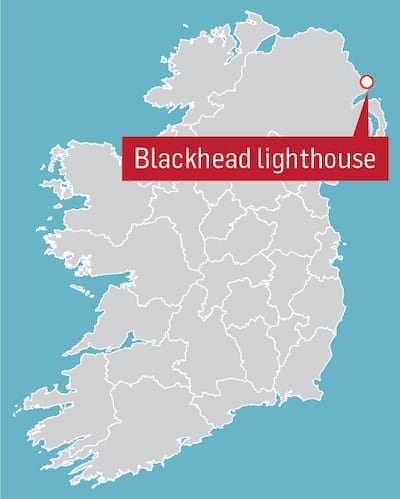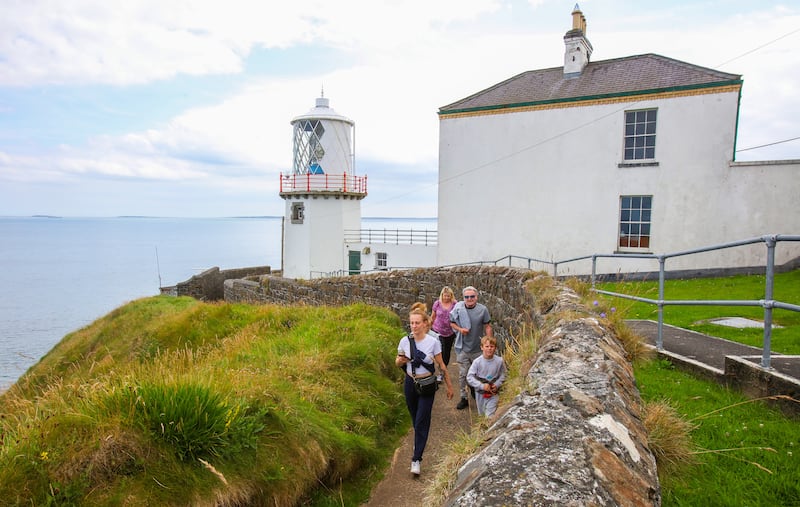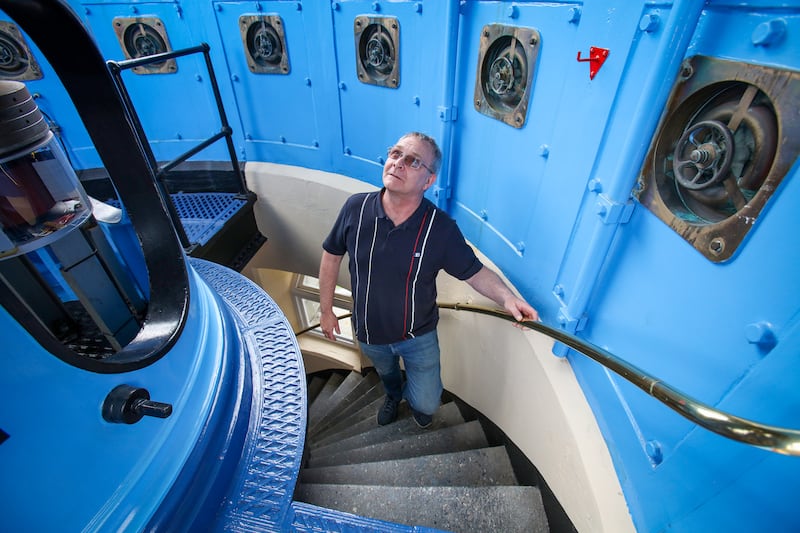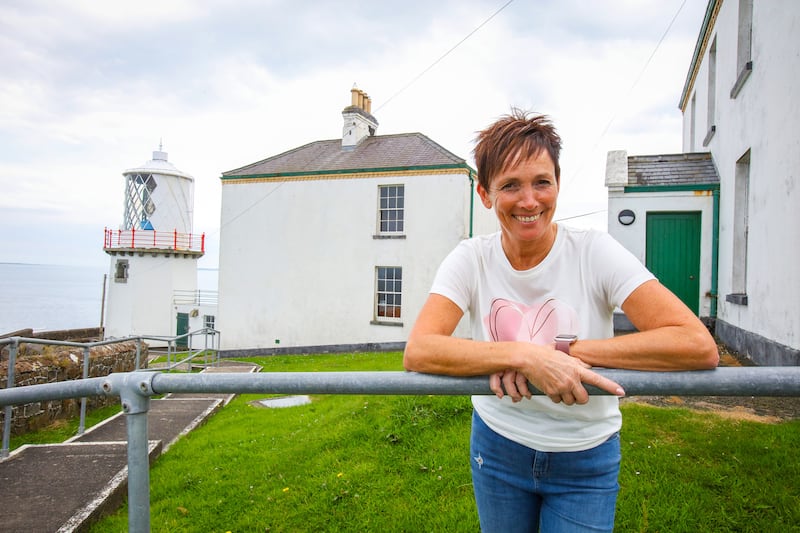For centuries, Ireland’s lighthouses have stood strong against raging storms, offering a beacon of hope for sea travellers and carrying a strange fascination for those on land. In a new series, The Irish Times visited some of Ireland’s most notable lighthouses, including Blacksod, Fanad, Ballycotton, Hook, and Wicklow Head, to learn about their fascinating histories and how their roles have changed in the modern era.

About 50 or 60 years ago, before container traffic, “this place would have been littered with ships going in and out, in and out,” says Philip Lawlor as he looks across to Belfast Lough from Blackhead Lighthouse.
The unmanned Antrim lighthouse is on the northern side of the lough, close to the seaside village of Whitehead, on the coast between Carrickfergus and Larne. Due east is Scotland while to the south are the Copeland Islands of Co Down and the lighthouse tower on Mew.
The Isle of Man is to the southeast and on a clear night, Lawlor says, you can see “the loom” from the lighthouse on its northeastern tip. By loom he means not the origin of the light beam, which is hidden behind the horizon, but the glow it leaves in the sky.
READ MORE
Blackhead entered service in 1902, “so it is only 122 years old”, says Lawlor. “The others were built in the 1840s, the 1850s, when there was a big influx of lighthouses, so this is a relatively new one.”

Lawlor, who is from London, has been working for the Commissioners of Irish Lights for 20 years, initially as a maintenance electrician – “I answered an ad looking for a man to do light housework,” he jokes – but he now serves as a team leader, co-ordinating maintenance work on 70 lighthouses located on the most exposed parts of Ireland’s coast.
“It’s constant,” he says.
A big job can involve six or nine months of planning and then “all of a sudden, storms start coming in and that can delay you for weeks, sometimes months,” he says.
“At the moment there are three guys up at Inishtrahull [an uninhabited island six miles north of Malin Head, Co Donegal] re-roofing the properties there. There are painters down in Cork, at Roche’s Point. Their next job is to go over to Valentia Island in Kerry, where the lighthouse needs repainting.”
When pressed, he says his favourite lighthouse is Inishtrahull. “You can go out for hours and have walks around the cliffs. It’s beautiful on a summer’s day, the place to be. If I had to spend a week at a lighthouse, it would be Inishtrahull.”
Blackhead is a 16m octagonal tower on a low cliff. What is most striking about the interior is its style. The steps up to the first floor have an attractive brass handrail on one side, an iron rail at the top that someone has painted the colour of a glossy red pepper. Wooden panelling follows the curve of the first floor wall.

“I love the workmanship that went into that,” says Lawlor, running a finger along one of the panels. “I know the details are small, and maybe insignificant, but the tradesmen didn’t need to do that. Look at that curvature. That’s real tradesmen.”
A stout cast iron pillar painted marine blue runs up the middle of the tower. Asked about this, Lawlor explains it is a weight tube.
“The keeper on watch would have to wind up the weight, on a pulley system, and as the weight fell within the tube it would rotate the lens [the lens encircles the light at the top of the tower],” he says.
“When it got to a certain level, the weight would set off a little bell, ping, that would remind the keeper to wind the weight back up again. Every lighthouse was different. Some took 20 minutes, some 40, for the weight to fall, so the keeper on watch, that was his job. There was no falling asleep.”
The lens surrounding the light weighs six to seven tons and sits on a cast-iron pedestal that “floats” on a bath of mercury.
“The chemical make-up of the mercury allows it hold up the weight. It floats, so [the lens] moves smoothly,” Lawlor says.
The rotation is powered by a relatively weak motor. “You could stop it with your fingers,” he says.
The light can be seen for about 25 nautical miles, in fair weather (a nautical mile is a little longer than a mile on land).

“Modern electronics, modern technology, can fail,” Lawlor adds. “The way I look at it, this is your main aid to navigation, and all the electronics is your back up system.”
Three houses linked to the lighthouse, which formerly housed the keepers, are available for rent via the Irish Landmark Trust and, according to manager Pamela Steward, they are much in demand.
They have period wooden windows, doors and fireplaces and outside every window is the spectacular view.
- Sign up for push alerts and have the best news, analysis and comment delivered directly to your phone
- Join The Irish Times on WhatsApp and stay up to date
- Listen to our Inside Politics podcast for the best political chat and analysis






















